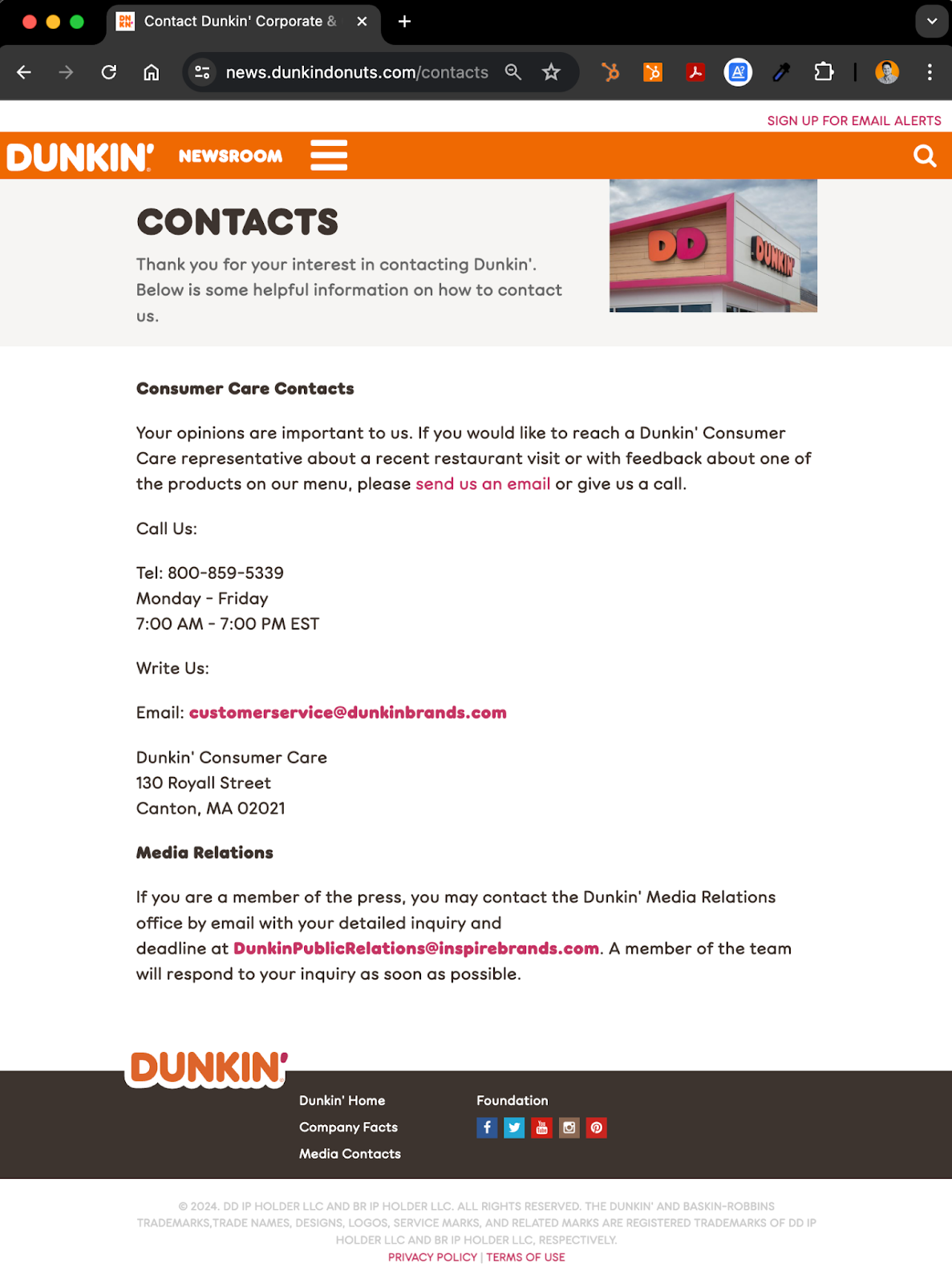Guest Feedback
Building a Dedicated Feedback Page for Your Restaurant (and Why Dunkin' Needs One)
Discover how creating a dedicated customer feedback page on your restaurant's website can reveal valuable insights, drive improvements, and foster loyal customer relationships, using Dunkin' as an example of a brand that could benefit from this approach.

Customer feedback can be your golden ticket to building a strong brand reputation and customer loyalty. It reveals what your customers love, what needs improvement, and where hidden opportunities lie. But how do you capture this valuable data in a way that's both convenient for customers and insightful for your business?
The answer: a dedicated customer feedback page on your restaurant's website.
This isn't just a place for customers to vent frustrations (although that's valuable too!). It's a direct line to understanding your customers' needs and experiences. Here's how to create a feedback page that gets results, with a specific example of how a major brand, Dunkin', could improve.
Learning from Dunkin's Shortcomings
Many restaurant chains, including Dunkin', currently rely on generic "contact us" pages for customer feedback. While providing phone and email options is a start, it doesn't offer the specific format and ease of use that a dedicated feedback page can. Now, the number of Google Reviews Dunkin' receives annually isn't directly reported. However, Dunkin' has a Google Reviews Dunkin' receives annually isn't directly reported. However, Dunkin' has a significant customer engagement, with over 3 million customers served daily and substantial activity on digital platforms, including their loyalty program with millions of members. The data available to Dunkin’ is mountainous.

significant customer engagement, with over 3 million customers served daily and substantial activity on digital platforms, including their loyalty program with millions of members. The data available to Dunkin’ is mountainous.
Take a look at Dunkin's contact page. While they offer phone and email options, there's no dedicated form for customer feedback specifically related to their restaurant experience, menu items, or mobile app. This makes it less convenient for customers to share their thoughts and potentially discourages feedback altogether. What a missed opportunity!
Asking the Right Questions
To get the most out of your feedback page, ask specific questions:
- Experience-based: Did we meet your expectations? How was the service? Was the atmosphere inviting?
- Menu-specific: What did you think of a particular dish? Did the menu offer enough variety?
- Website/App Feedback: Was the website easy to navigate? Did online ordering work smoothly?
- Open-Ended Prompts: Leave space for customers to share additional thoughts and suggestions.
Crafting a Positive Follow-Up
- Acknowledge All Feedback: Thank customers for taking the time to share their experiences, both positive and negative.
- Address Concerns Promptly: Show customers you care by addressing negative feedback quickly and professionally. Outline any steps you're taking to resolve the issue.
- Celebrate the Wins: Respond to positive feedback with genuine appreciation. Consider highlighting it on your social media channels or website.
Turning Feedback into Insights
- Identify Trends: Look for patterns in the feedback to pinpoint areas for improvement. Is a specific drink consistently getting negative reviews? Is there confusion about the mobile app's loyalty program?
- Measure Customer Sentiment: Track overall customer satisfaction over time. Are your efforts to improve the customer experience paying off?
- Uncover New Ideas: Customer feedback can spark innovative ideas for menu items, promotions, or even new restaurant concepts!
Taking it a Step Further
While a dedicated feedback page is a great first step, consider these additional tools to maximize customer engagement:
- Social Media Listening: Actively monitor relevant social media mentions to catch customer feedback that might not reach your website.
- QR Codes at Tables: Make it easy for customers to leave feedback right after their meal with a strategically placed QR code.
- Email Surveys: Send occasional targeted surveys via email to gather deeper insights on specific topics.
By creating a dedicated feedback page and fostering a culture of listening, your restaurant can:
- Boost Customer Satisfaction: Addressing concerns and implementing improvements shows customers you value their feedback.
- Gain a Competitive Edge: Understanding your customers' needs allows you to tailor your offerings and stand out from the crowd.
- Drive Brand Loyalty: Building trust and showing customers you care fosters positive relationships that keep them coming back for more.
Conclusion
Remember, customer feedback is a gift. By creating a space for it and actively listening, your restaurant can turn up the volume on customer satisfaction and create a thriving business. Consider checking out services like Akira. They offer a suite of features specifically designed to help manage online reputation, including customer feedback form integration and analysis.